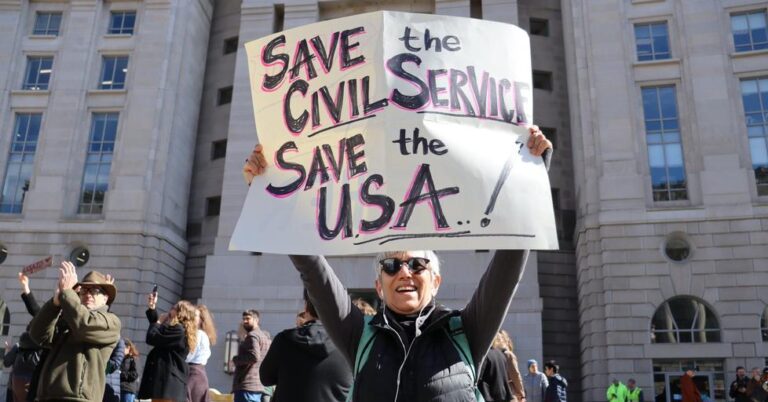The new administration has made no secret of its intent to dismantle remaining protections for reproductive rights. Despite the fact that 79 percent of Americans think abortion should be legal in at least some circumstances, President Trump and Vice President Pence have both made statements indicating their desire to overturn Roe v. Wade, and Trump’s Supreme Court nominee Neil Gorsuch is likely to be hostile to reproductive rights. The administration has also made moves to defund Planned Parenthood via the global gag rule, entrench the Hyde amendment, and repeal the contraceptive mandate of the Affordable Care Act. A drastic anti-choice bill was introduced in Congress that would ban abortion after six weeks, a point at which many people do not even know they are pregnant.
These attempts to constrict reproductive choice are not only an affront to the basic principles of liberty and privacy that underlie this country’s abortion jurisprudence, but also a threat to the labor rights of anyone capable of becoming pregnant. Should the new administration’s assault on reproductive rights come to fruition, many of those capable of becoming pregnant will be coerced into pregnancy and parenthood—a kind of labor they did not choose. These burdens will be placed most severely on low-income women and women of color who cannot afford to access reproductive services. Cuts to funding and services will further negatively impact trans men, who already face ignorance and discrimination when trying to access reproductive healthcare.
Abortion Restrictions as Forced Labor
Most fundamentally, overturning Roe or passing a six-week ban would force pregnant people into the nonconsensual physical labor that is pregnancy and childbirth. Andrew Koppelman, a constitutional law scholar at Northwestern, has provided a compelling Thirteenth Amendment defense of abortion, arguing forced childbirth is a violation of the Constitution’s prohibition on involuntary servitude. It is worth revisiting this argument in the context of the new administration’s threats to reproductive healthcare.
Abortion prohibitions, the argument goes, violate the Thirteenth Amendment by wielding government power to force women to use their bodies for a purpose that is not their own. As Koppelman points out, the Supreme Court has interpreted the Amendment’s prohibition on involuntary servitude to be more expansive than a prohibition on slavery alone. In Plessy v. Ferguson, for example, the Court wrote involuntary servitude encompasses “the control of the labor or services of one [person] for the benefit of another, and the absence of a legal right to the disposal of [one’s] own person, property, and services.” Forced pregnancy controls the body of the pregnant person to serve the fetus. The government, by outlawing abortion, is imposing the coercion that results in the involuntary pregnancy and labor.
Koppelman presents a strong argument for conceptualizing the abortion right under the Thirteenth Amendment. It is important for labor advocates to take notice of this framing and the labor implications of forced pregnancy, given the current threats to the existing constitutional framework.
Proposed Restrictions
Koppelman’s article provides thoughtful responses to a number of counterarguments, but underlying his theory is the idea that the Thirteenth Amendment embodies principles of self-ownership—a guarantee to not have one’s body controlled by others. This argument becomes more relevant than ever and deserves renewed attention as the federal government threatens near-total bans on abortion access. Reconceptualizing the law’s view on labor and involuntary servitude to include involuntary pregnancy provides a useful lens for describing what exactly is so problematic with government-imposed abortion bans.
A forced labor view of abortion restrictions would most certainly call into question a six-week abortion ban or a decision overturning Roe v. Wade. Allowing states to completely ban abortion or imposing a federal ban at a time when most people do not even know they are pregnant goes to the core of Koppelman’s argument that the government cannot coerce involuntary pregnancy. The same goes for Oklahoma’s proposed “paternal consent” law, which would ban abortion without written consent from the “father.” The legislator behind the bill expressed his belief that a woman’s body is not her own, because when she is pregnant she becomes “a host” for the fetus. As Koppleman argued, “a law giving the father of the fetus the right to veto an abortion would present the easiest thirteenth amendment case of all,” because it gives another person complete control over the body and labor services of the individual.
Cutbacks or removal of funding for reproductive healthcare pose a more complicated question. As Koppelman acknowledges, there are additional challenges in making a Thirteenth Amendment argument against laws that make abortions more difficult to obtain, but do not directly ban them. The Supreme Court has often viewed economic hardship as a personal obstacle, rather than a state-imposed barrier to rights. Yet, ability to overcome economic barriers is frequently the deciding factor for whether someone will be able to access services. Even in the face of draconian laws, wealthy women will always have the option of traveling and paying for the abortion or other reproductive health services they need. Given these realities, low-income women and women of color will face the greatest risk under the new administration of being forced into the indentured servitude that is involuntary pregnancy. The Court will sometimes recognize the significance of such financial burdens. In Boddie v. Connecticut, for example, the Court found states could not deny a divorce to someone just for their inability to pay court fees. Reconceptualizing prohibitions on government funding for abortion services as forced labor may provide a more compelling lens for scrutinizing restrictions like the global gag rule, the Hyde amendment, or the repeal of the ACA contraceptive mandate.
Trump’s Response
It is true that President Trump has proposed a plan for six weeks of paid maternity leave, but such proposals should not distract from forced labor concerns. For one, the proposal is flawed in that it is unclear who will be covered. The proposal initially stated only married women who gave birth would be covered, but Trump then promised single mothers would also be included. This still leaves out same-sex couples and adoptive parents, as well as trans men. Maternity leave (as opposed to gender-neutral parental leave) policies also reinforce stereotypical gender roles, which encourage women to stay home and men to work.
Most importantly, no amount of paid leave would excuse the forced labor imposition of abortion prohibitions proposed by the current administration. As Koppelman argues, many white slaveholders convinced themselves that physical, agricultural work was suitable labor for blacks, with or without their consent, and this system was in the slaves’ best interest. In this vein, Koppelman points out that abortion opponents “tend to think that motherhood, whether forced or willing, is a suitable role for women.” Thus, they may be compelled to support programs like paid maternity leave or child tax credits, which aid women in their role as mothers, but do nothing to combat the forced labor problem with involuntary pregnancy.
How States Can Help
While some states have been emboldened by the Trump administration to introduce their own abortion restrictions, others are choosing to step up and defend reproductive rights. There are a number of actions states could take to protect pregnant employees, such as requiring insurance providers to cover birth control, increasing state funding for family planning, or funding paid parental leave. Eighteen states have introduced bills this session to protect reproductive choice, including requiring disclosures for crisis pregnancy centers, recognizing abortion as healthcare, limiting religious exemptions to employer provided contraception, and making emergency contraception more accessible to survivors of sexual assault. In response to Trump’s order repealing the ACA’s contraceptive mandate, Governor Cuomo made a statement that New York would step in and require health insurers to cover medically necessary abortions and most contraception, as well as proposed Roe v. Wade be protected in New York’s constitution.






Daily News & Commentary
Start your day with our roundup of the latest labor developments. See all
December 7
Philadelphia transit workers indicate that a strike is imminent; a federal judge temporarily blocks State Department layoffs; and Virginia lawmakers consider legislation to repeal the state’s “right to work” law.
December 5
Netflix set to acquire Warner Bros., Gen Z men are the most pro-union generation in history, and lawmakers introduce the “No Robot Bosses Act.”
December 4
Unionized journalists win arbitration concerning AI, Starbucks challenges two NLRB rulings in the Fifth Circuit, and Philadelphia transit workers resume contract negotiations.
December 3
The Trump administration seeks to appeal a federal judge’s order that protects the CBAs of employees within the federal workforce; the U.S. Department of Labor launches an initiative to investigate violations of the H-1B visa program; and a union files a petition to form a bargaining unit for employees at the Met.
December 2
Fourth Circuit rejects broad reading of NLRA’s managerial exception; OPM cancels reduced tuition program for federal employees; Starbucks will pay $39 million for violating New York City’s Fair Workweek law; Mamdani and Sanders join striking baristas outside a Brooklyn Starbucks.
December 1
California farmworkers defend state labor law, cities consider requiring companies to hire delivery drivers, Supreme Court takes FAA last-mile drivers case.